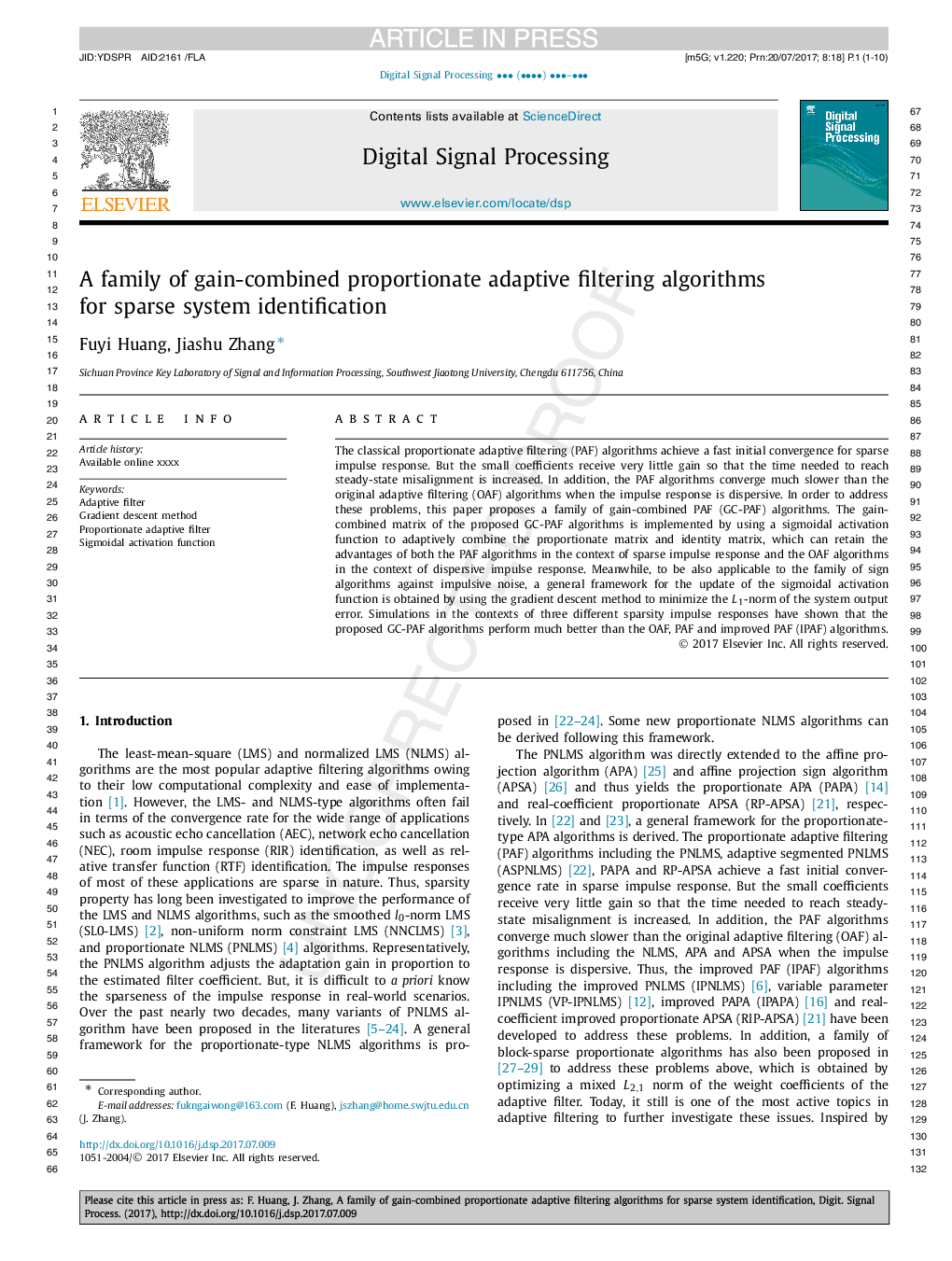| Article ID | Journal | Published Year | Pages | File Type |
|---|---|---|---|---|
| 4973760 | Digital Signal Processing | 2017 | 10 Pages |
Abstract
The classical proportionate adaptive filtering (PAF) algorithms achieve a fast initial convergence for sparse impulse response. But the small coefficients receive very little gain so that the time needed to reach steady-state misalignment is increased. In addition, the PAF algorithms converge much slower than the original adaptive filtering (OAF) algorithms when the impulse response is dispersive. In order to address these problems, this paper proposes a family of gain-combined PAF (GC-PAF) algorithms. The gain-combined matrix of the proposed GC-PAF algorithms is implemented by using a sigmoidal activation function to adaptively combine the proportionate matrix and identity matrix, which can retain the advantages of both the PAF algorithms in the context of sparse impulse response and the OAF algorithms in the context of dispersive impulse response. Meanwhile, to be also applicable to the family of sign algorithms against impulsive noise, a general framework for the update of the sigmoidal activation function is obtained by using the gradient descent method to minimize the L1-norm of the system output error. Simulations in the contexts of three different sparsity impulse responses have shown that the proposed GC-PAF algorithms perform much better than the OAF, PAF and improved PAF (IPAF) algorithms.
Related Topics
Physical Sciences and Engineering
Computer Science
Signal Processing
Authors
Fuyi Huang, Jiashu Zhang,
